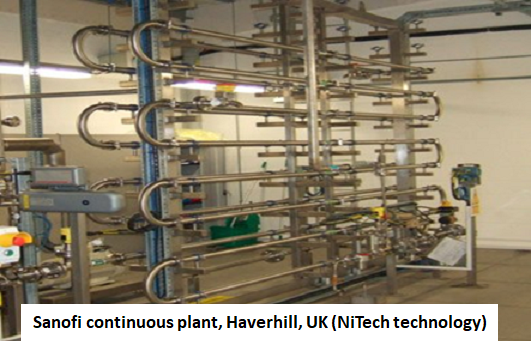Reshoring Set To Create Winners And Losers As Advanced Manufacturing Takes Over

Not many companies still operate in the same way as 500 years ago, or even 50 years ago. But in manufacturing, it’s quite common. As the pictures show, a visitor from Shakespeare’s time – or from after World War 2 – would feel at home if they visited many manufacturing sites today.
The issue is that they still use traditional stirred tank reactors. These operate rather like the pot in which you might cook stew or chilli con carne:
- You carefully prepare all the ingredients, put them in the pot, turn on the gas or electric and put on the lid
- You then leave them to cook for the time suggested in the recipe – occasionally taking off the lid to stir it all around
- Every meal is therefore slightly different, and some meals can go badly wrong if an inexperienced cook lets the mixture burn.
Amazingly, this is how manufacturing still operates today with stirred tank reactors (STRs), even though the rest of the site may be very advanced in terms of digital operations and using very expensive raw materials:
- Inertia is always a great barrier to progress, and 500 years of history creates a lot of inertia
- Companies often don’t care too much about manufacturing costs, if their final product is very profitable
- Technical specialists may well have spent a lifetime learning how to cajole the reactor to work more reliably
So nothing changes.

Until, that is, that something else suddenly changes in the outside world. And then, very quickly, the new paradigm takes over and ‘business as usual’ disappears.
This “something else” has now arrived with the collapse of many global supply chains. Vital products including pharmaceuticals and many others have become hard to obtain as a result of the disruption and export bans introduced around the world. Some major countries have come close to running out of basic generic drugs such as paracetamol.
And even when product is still being made and available for export, there may be no transport to take them to market. Air freight costs have rocketed, as have shipping costs – the benchmark Baltic Dry Shipping Index was was close to 2000 last week, up from at 393 on 14 May.
Equally important is that it makes no sense to reshore on the basis of centuries-old technology when digital, continuous & biotech-enabled technology is safer, greener, faster and cheaper.
The photo of pharma company, Sanofi’s (SNYNF) plant in the UK shows the difference that can be achieved with modern technology. It uses technology from NiTech Solutions (where I have the privilege of being chairman). It needed only 20% of the space required for STRs with further savings in terms of civil, structural, vessel and piping costs.
Advanced manufacturing of this kind is one of the key paradigm shifts that I discussed last week in my ICIS Chemical Business analysis of the changes now taking place as we move into the New Normal. Companies who recognise and quickly adapt to these paradigm shifts will be the Winners over the next few years.
Disclosure: I wrote this article myself, and it expresses my own opinions. I am not receiving compensation for it. I have no business relationship with any company whose stock is mentioned in this ...
more



With this massive disruption of status quo- how do you imagine the "new normal" of advanced manufacturing?
Thanks, for the comment Isaac I see reshoring as providing a major opportunity to rethink both design and operation, with the aim of finally moving away from traditional batch processes to adopt digital, continuous and bio-enabled technology to create a safer, greener, faster, cheaper and more flexible
manufacturing footprint. I go into more detail in this analysis internationalechem.com/.../ICB-Jun20.pdf